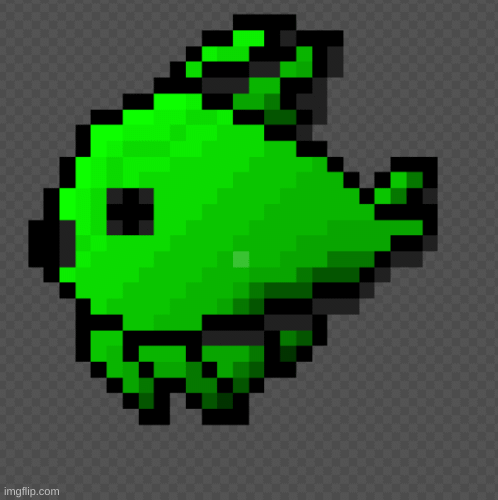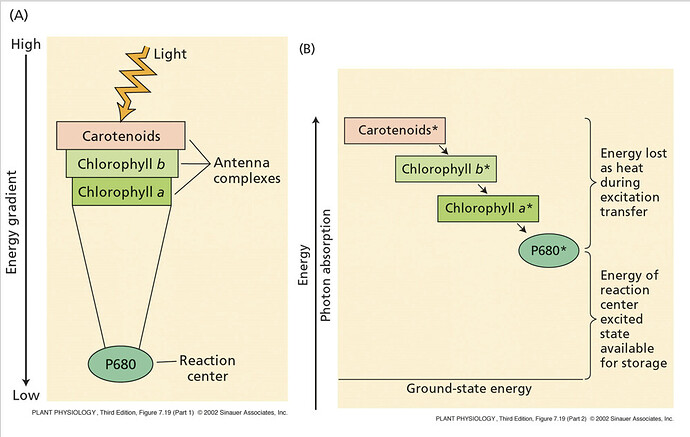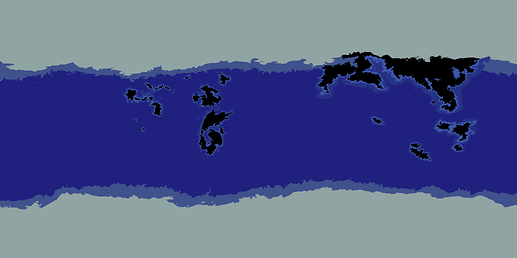having a ring of mitochondria with an open space capped with zinc and copper as well as a structure that can contain hydrogen would probably make the buzzos go from survival flight to creative flight
I’m stupid enough to not understand about half of what you said, but I like the idea!
By the way, what do you guys think of the species’ designs, like, if they’re look unique or something. Idk, but it seems like they’re too simple to me…
which parts did you not understand? if you tell me i can explain them in either more detail or simpler terms
What did you mean with “ring of mitochondria with an open space capped with zinc and copper as well as a structure that can contain hydrogen”
Like this all will be a macro or microcelullar struture? How will he be able to fly with that?
the structure that contains the hydrogen would be multicellular and made of the cells with the electrolysis circuit made of mitochondria. and that would basically be a hydrogen bladder that generates oxygen while filling itself up
Ooooh I think I understood! It serves both to sustain itself in the air (like an airship) and to be “self-sufficient” and be able to fly for longer, right?
Anyways, this week i worked on some more thingies, hope you guys like it!

(Thanks Willow for the chemistry part!)
The Pseorugas (Volari migratoris) are an herbivore species, capable of flight, swim and walk on coastal beaches of the west Ceatrus. They are and descendants of the Buzzos, which were capable of gliding for a few seconds to have accelerated photosynthesis and escape potential predators.
At the end of the Torsian Period, pseorugas evolved an air bladder that carried out some chemical reactions to obtain oxygen (for self sustening, and hydrogen, which helped it achieve something close to flying. Due to the increase in vulpine predators, which stole eggs from peaceful species, the Pseorugas decided to change their habits and lay their eggs in the sand on the beaches, keeping them hydrated and safe. When they are born, the babies break free from the membrane, feed of it, and walk slightly disoriented towards the sea.
Ceatrian flora phylogeny
From left to right:
Thaumerella: A terrestrial plant that can reach almost two meters in height. Its seeds are evolving to spread with the wind.
Lavanurella: Another terrestrial plant, its leaves bloom slowly as it grows
Archovia: The third existing land plant, more primitive than the other two. It has no seeds, it reproduce through underground spores.
Dichaboris: A marine plant, its seeds can be located either in the lower part or in the upper “bait”, which is made to be eaten by herbivores, which, when dumping the waste, remain intact and sprout. It evolved in a period of herbivore dominance.
Folliuyton and Boreayton: Close relatives, Folliuyton lives in areas closer to the equator, and reproduces quickly. Meanwhile, Borealyton lives in the Arctic region, where the presence of predators is very low and can adopt a slow and continuous method of reproduction.
Nativitops, Krisava and Panfolia: Three species very different from each other, Nativala developed this strange form that was considerably resistant to predators, Krisava lives on coastal rocks and survives only in the humidity of the sea, And Panfolia are small plants that cover much of the sea floor.
(Ignore the error of Nemaelly position on the phylogenetic tree, i didnt saw it when i was drawing)
Archostides: They visually resemble the Archovia, but are actually unrelated. They share the small plant niche with Panfolia.
Nemaelly: Most of its photosynthesis is done in its small, soft branches.
Doligae: A large seaweed, many herbivorous animals feed exclusively on it. Depending on the right conditions it can grow indefinitely.
Minitha and Gigatha: Two related species, but with divergent sizes and colors. Gigatha has this strong yellow color to confuse herbivores that it is sick, as most plants have a dark yellow-green color.
Thats all, if you guys think that something looks wrong (im sure that there is something, isnt?), gimme some feedback!
looks pretty good!
due to UV being the most damaging abundant kind of light and melanin making usable energy and heat when UV hits it i’m excited to see what the species of this world do with melanin
In plants, melanin is not used as part of their ability to prevent UV damage for the most part.
They have the Carotenoids that make it there, mainly as an energy funnel in photosynthesis.
They have something similar to the one called ‘catechol melanins’ but it is basically the same thing, but produced less compared to animals, which are much more common there.
i thought that was because they can just cut off the bits of tissue that become malicious since the cells can’t metastasize?
though they aren’t exactly earth plants so at least the motile lifeforms will probably have some form of melanin they use in abundance at some point to turn UV directly into usable energy that they use for carbon fixation since their cells can metastasize, though it might only evolve in a species that took on the role of mole and lost all its photosynthetic compounds but kept the enzymes for storing energy and is being forced out of the ground every now and then(probably by predators)
It is really true that they are related to the oxidation of the plant (they are the ones that cause browning in certain fruits such as bananas after cutting) but it is only a byproduct that it happens this way, I 100% dont know why. I didn’t learn about it in the university material either, it will be this year when I start studying plant diseases.
This is simply what happened on Earth (“ours”), in principle plants and animals split more than 1.2 billion years ago, enough time to create a different physiology, as it indicates that they are able to create melanin in one form or another. So hypothetically, it’s very possible that a plant, even made melanin instead of carotenoids as a major UV protector, or something else entirely.
Who knows what’s going on there, since UV is quite a universal problem in many places, so you need a way to protect against it, but it’s not the only way.
Heck yeah im totally going to do alien autumn trees without doubt
Also, im almost finising to make the Ceatrus map, then i will be able to visualize things better
Here’s some pixel art of Meoowis:

I hope you like it!
This project got me thinking could some kind of open-source file-based speculative biology database on GitHub exist and work well, so people could send pull requests to develop it…
AAAAA THEY LOOKIN SO SILLY
Thank you for warming my day ![]()
Like an “SpecHub”? This would be sick, i really like this idea
An important update: My digital pen had a problem, so I had to change it, that is, I can’t draw the phylogenetic trees and concept art anymore.
I don’t know when the new one will arrive, and I’m going to use this opportunity to improve my drawing in general (I tried to draw some land animals and realized that I have an serious problems with limbs)
For you guys dont be sad, here is a sneak peak of the Ceatrus Map! (ignore the black land)
It sort of looks like the map of Serina, the world of birds, in the Mid Ultimocene.
Anyway, I turned the Meoowis Pixel Art into a GIF!
Here it is:

Theoretically me, you, we, or anybody else (it depends) could start such project. It might be good idea to have some license maybe and some planning though.
But this topic perhaps should have another dedicated thread to continue this discussion.
belgium, he hasnt posted in this topic since 2 weeks, i think that he just forgot about th-
DRAMATIC DOOR SLAM
NO! I dont. I was just having some problems with climates, limbs development and a bit stressed in general (i still am, not related to this though)
I made this very pretty drawing of an Pseoruga, and i really like how its looks.
Oh, and i also finally finished the Ceatrus map!

This is an climate map of Ceatrus, during the Torsian period.
I could put an legend on it, but i didnt so i willtry to explain what the colors mean.
The light green close to the poles is an tundra.
The darker green tones below it are taiga like climates with different humidities.
The neutral greens tones that are in the middle of some of the west islands is what i call “colder temperate” yes, sounds bad but i cant come with an better one.
The ligher green after that is, yes VERY ORIGINAL, hotter temperate or just temperate climate.
the yellowish green is somewhat an mediterranean climate, with an little trend to savanna.
And the smol yellow is an savana.
Yeah i will totally make an legend for it, i explain maps really bad…
By the way, can you guys come with some name ideas for the islands and the continents?
The large arctic continent could be called “Magnofrigia”
While the lower island in the G-shaped archpellago (Garchipelago should we call it?) could be called “Upsiland”.
Uhh, so… Isn’t like i abandoned this project, i just went on a pretty big unannounced hiatus due to school, but my school holidays are getting close so im going to continue.
I’m also remastering some of the earlier creatures (that you can see on my page on the speculative evolution foruns!!) because i wasn’t very satisfied with them. Anyways, another thing i wasn’t very happy with was with the way i describe the species. Well, i don’t know about y’all, but in my head the way i describe sounds like this:
“This is Guolua. It’s an carnivore that, uh, its very fast and uh, errrm… uses… has this size oh, and they like eating fhioahs. How i almost forget that. Anyways, next one!”
What I’m asking for is some tips and genuine critiques on the way i describe the goobers, and on my whole writing as a whole too.
I would post an sneak peak of drawing i’m making but i’m at school now so : p
What are you drawing those with?




